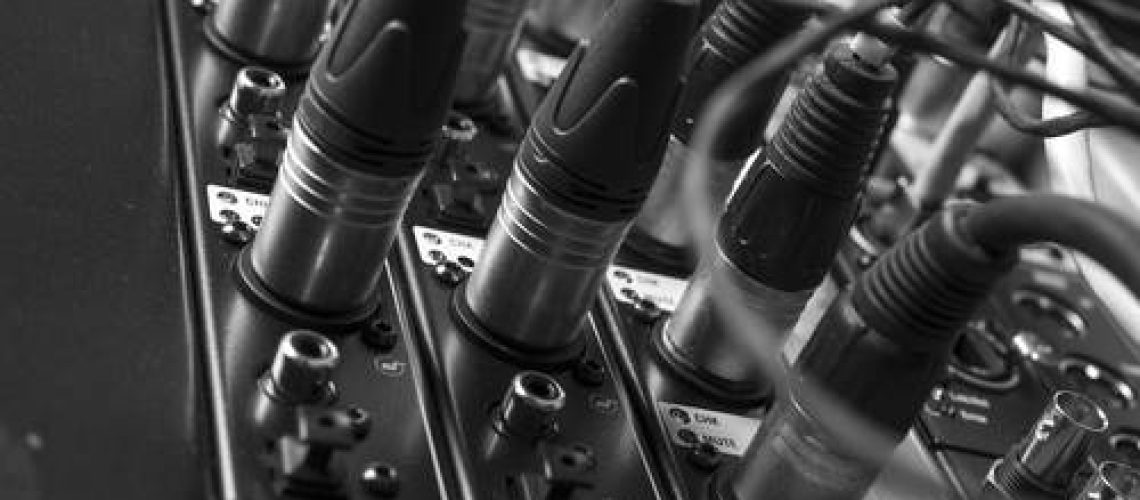
In this blog, let’s breakdown the most important and most overlooked piece of gear in a recording studio: Cables.
Broadly speaking Cables are divided into two forms
1. Analog
2. Digital

Analog Cables are cables that carry an analog signal, i.e voltage whereas digital signals work by transmitting a series of information in 1s and 0s i.e. binary code (On or Off)
You can go through the Analog Vs Digital Blog post to understand what the difference and meaning between the two are.
Lets first breakdown Analog Audio Cables into two broad types:
1. Balanced
2.Unbalanced
Balanced Signals are signals that are less prone to noise and these are cables that have three connections that are
+ Positive
– Negative
= Ground
The way that balanced cables works is pretty ingenious.
To understand this we would need to understand the concept of phase and polarity.
Let’s dive in,
Imagine two sound waves starting at the same time when these two sound waves meet each other the crest of one wave and the crest of the other wave will coincide. Hence these waves will cause constructive interference i.e the energy of that wave will increase.


Balanced signal works exactly on this Phenomenon, in this the two wire both carry the same signal but the polarity of one is exactly inverted to that of the positive wire. Now when the wires carry the signal, they both taken on the noise as it travels along, although when merging together the polarity of the signal is flipped back again to align with the signal and what we get a signal with the noise canceled out as the crest of one noise wave aligned with the trough of the other.
In the TS Connector the connections are:
Tip: + Positive Sleeve: =Ground
Now you must have noticed that every cable has two types of connectors.
These are called XLR Connectors

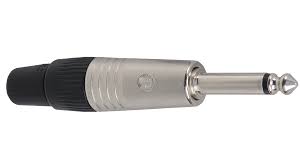

Usually, all you mixers outputs or any instrument outputs will be female connectors. This is what Female Connectors look like.
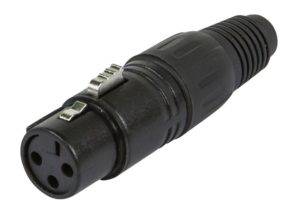
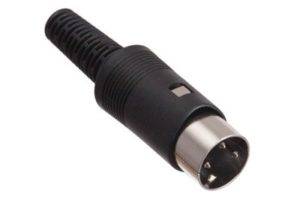
A TS cable has only two connections/wire and can carry an unbalanced signal A TRS cable, on the other hand, has three connectors and carry a balanced signal.
T = +Positive
Ring = -Negative
Sleeve = Ground

No, the headphone carries two channels of data and the headphone connectors are wired as below:
T = Left Channel
R = Right Channel
S = Ground
Using these connectors we can send three types of signals in Audio.
Line Level: These are signals that are standardized outputs from all pro audio equipment. A line level signal is usually what goes to a speaker or to a headphone preamp etc.
Mic Level: This is the level of signal coming from a Microphone, these signals usually are low and need to be amplified using a preamp to bring it to line level. Imagine you connect an SM58, the output from the microphone is too low to be directly connected to a speaker. Instead, we use a preamp and then send an increased signal, that then becomes a line level signal to the speaker.
Instrument Level: These are signals coming out of instruments like Bass, Guitar, Keyboards are all Instrument Level Signals. These need to be amplified to a line level before going to a speaker.
Next up are RCA Cables, You’d find these cables on DJ Mixers or Casset Machine or CD Machines. These are two unbalanced outputs that look like this:
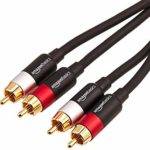
The Red cable is Right whereas the White is the left.
Now the Question remains when you should use a line level signal and when you should use a Mic level signal. The signal coming from a guitar is a line level signal and devices like Guitar Amps and Pedals are meant to work with line level signals, hence you can directly connect them to these amps or pedals. Whereas devices like a mixer are expecting a Mic Level signal, hence the unbalanced signal needs to be converted into a Balanced signal using a DI Box.
These DI boxes have multiple functionalities but they essentially take a signal from a 1/4 Cable or a TS cable and convert it into a Mic Level signal i.e a Balanced Signal which can then be connected to the Microphone Pre or Mixer Input.
These DI Boxes also have a Thru functionality that helps split the signal into two, one that goes to the amp and a direct signal that goes to the mixer.
In the next Blog, we will talk about Digital Cables.

